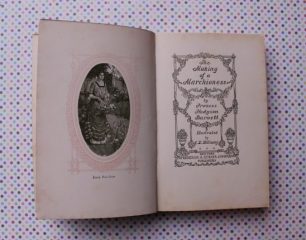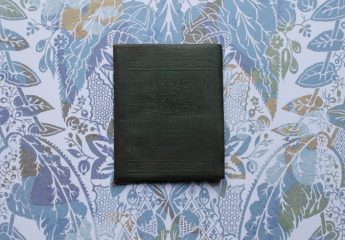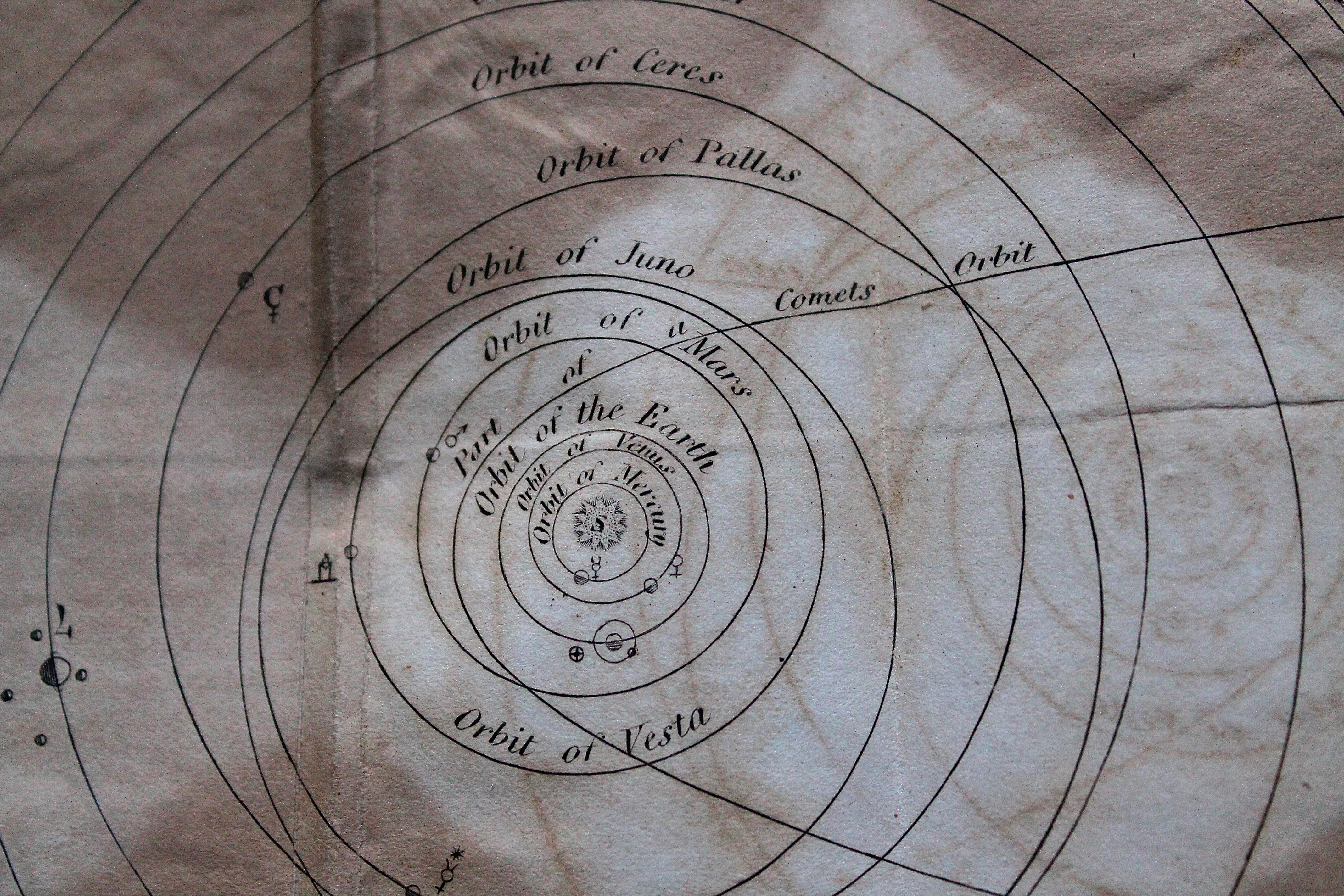
Elements of Astronomy, 1831 Edition

Did you have any textbooks in school that looked as beautiful as this? I didn’t think so.
This is the 1831 Elements of Astronomy, Illustrated with Plates for the Use of Schools and Academies, with Questions by John H. Wilkins, A.M. I believe this book was first published in 1825. Unfortunately, this book is not in the best condition. It is rather crumbly and features prominent water damage on all pages.

Nonetheless, it is still interesting, especially the illustrations.
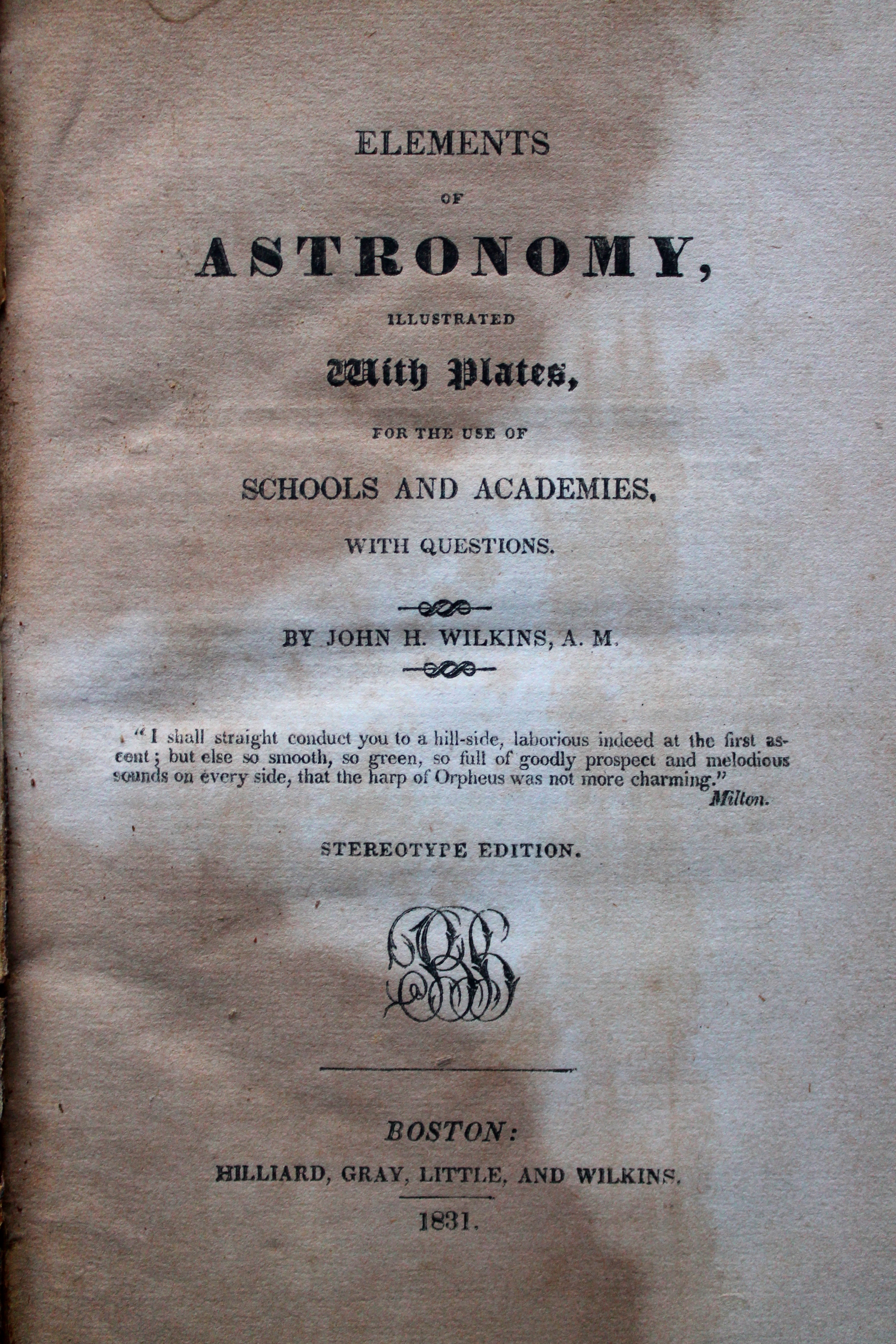
The quote is from Milton’s “Treatise on Education.”
Another thing to note is that this book is a “stereotype edition.” Stereotype printing was invented in the 18th century. According to the Museum of Printing,
“…the stereotype (or in French, the cliché), by which each multi-page form, in a special chase, is cast into a solid thin metal plate, which may be printed either upon patent bases on standard presses or on rotary presses built for stereo plates. Multiple plates can thus be made from one setting (hence stereo); and once the plates are made, the type can be distributed or melted for reuse. Mats taken from the type form can be expressed to remote sites for casting, allowing coordinated advertising and syndicated copy without resetting.” -The Museum of Printing
Stereotype printing was a great solution for books or newspapers that needed to fulfill a large order or needed many reprints. Since this was a textbook it was most likely mass produced, therefore stereotype printing would have been the most efficient and cost effective method of printing.
(And yes, both “stereotype” and “cliché” were first printing terms before adopting their modern definitions!)

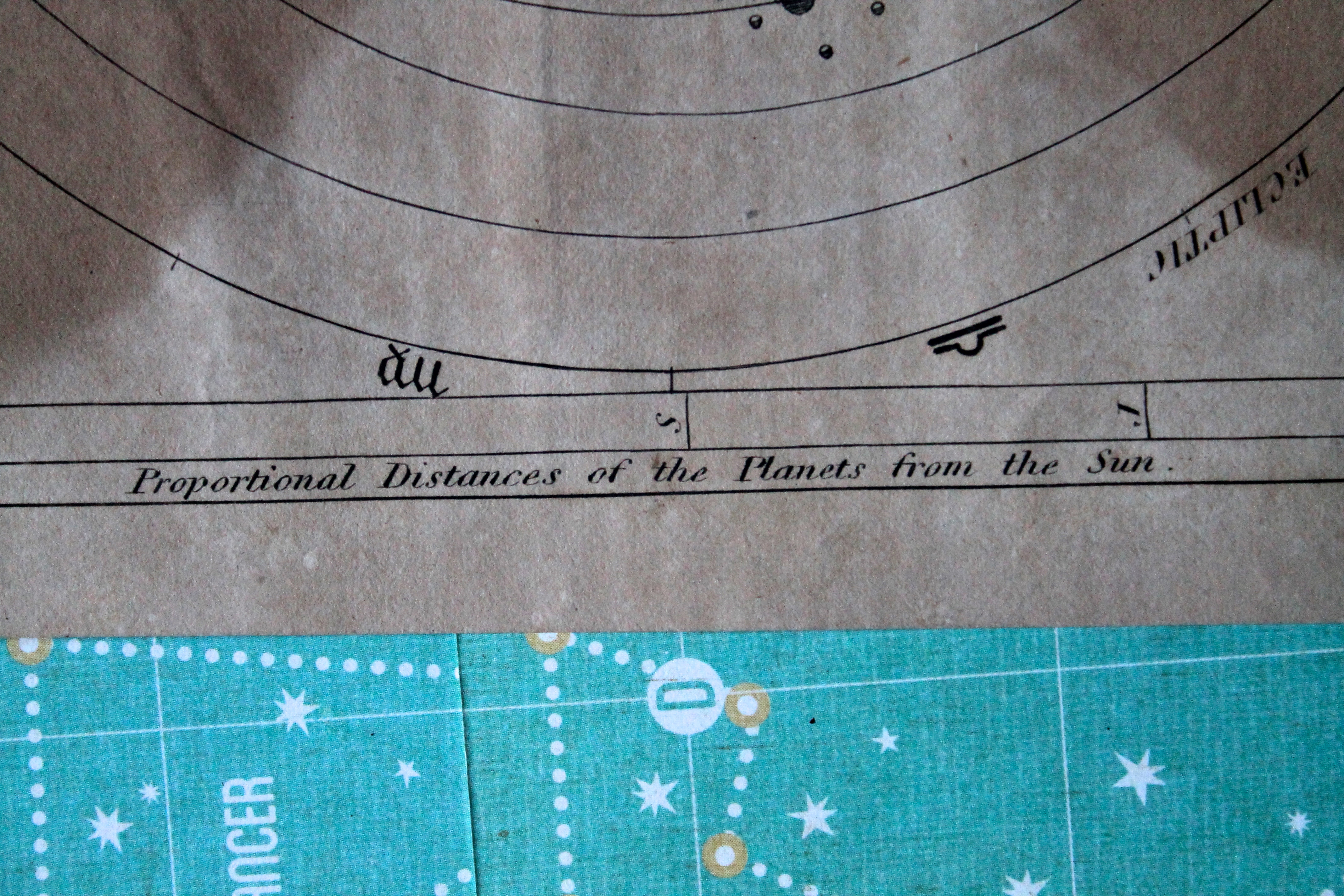
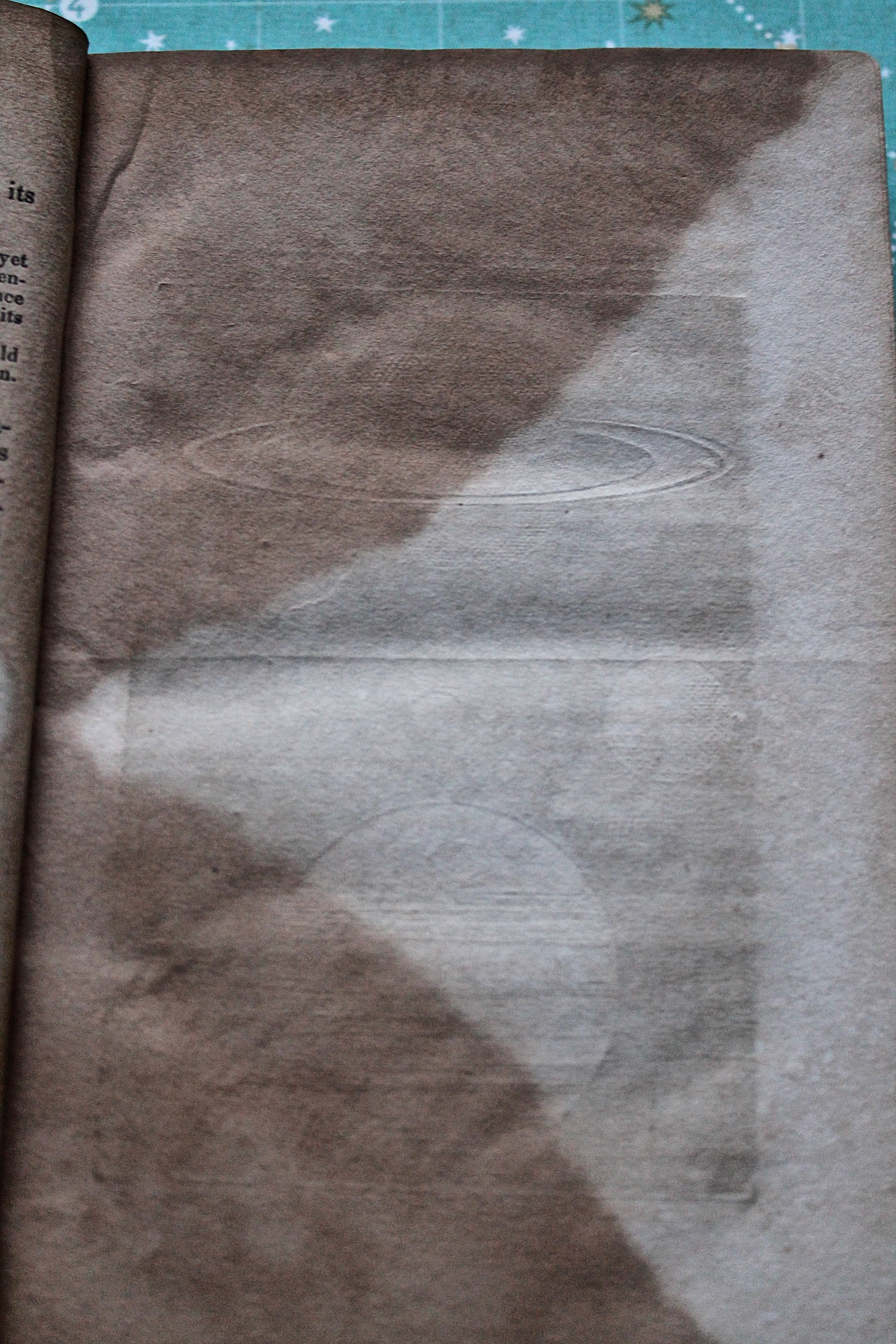
 Unfortunately, I am not an astronomer so I do not know if these findings are still considered accurate. If you are an astronomer or space enthusiast, let me know in the comments if this is true or not.
Unfortunately, I am not an astronomer so I do not know if these findings are still considered accurate. If you are an astronomer or space enthusiast, let me know in the comments if this is true or not.

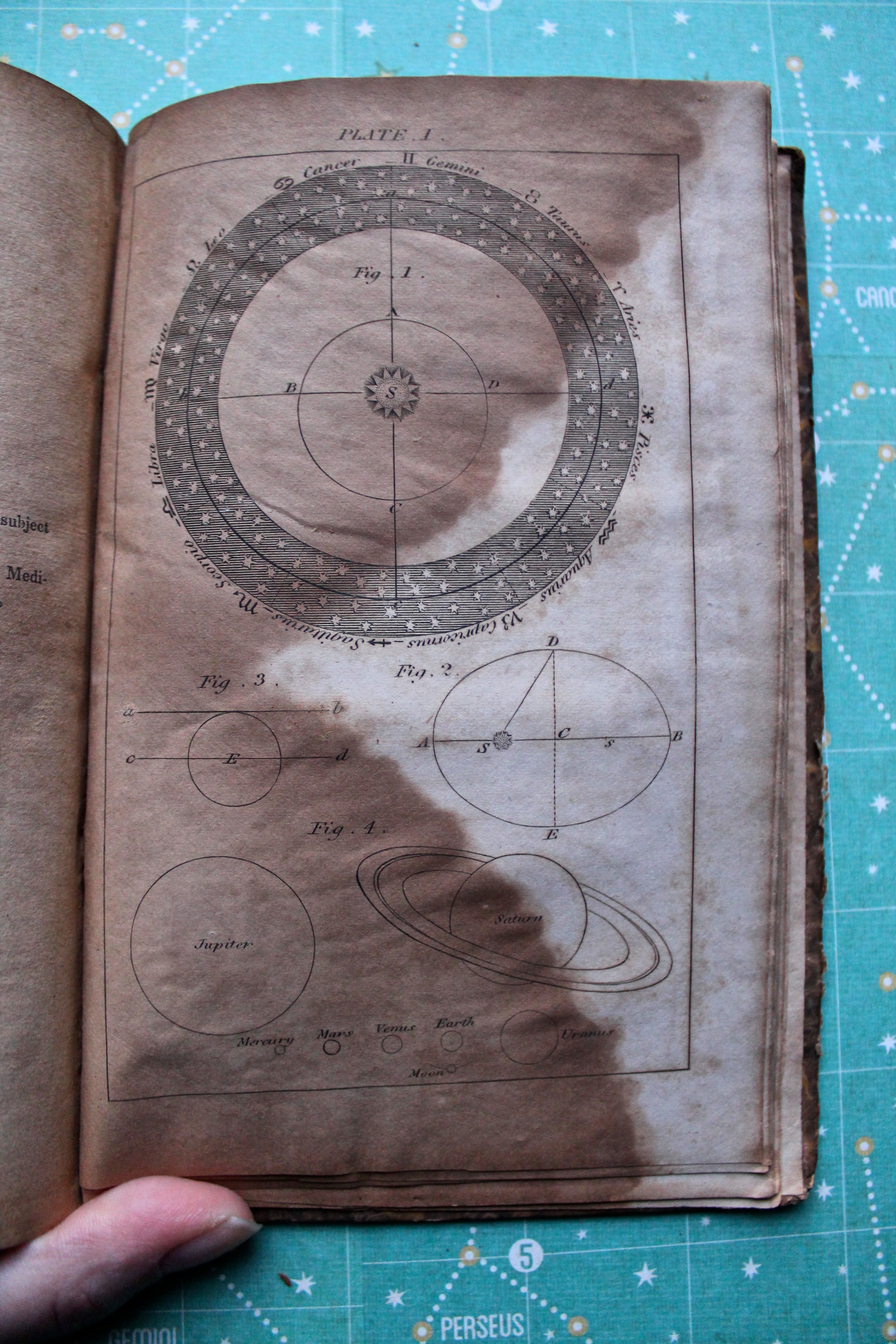
I think this is a wonderful mid-19th century textbook. People have been studying the stars for centuries, but it is still mind-boggling to think of the information these astronomers were able to collect well before we even had the means to leave our planet.
